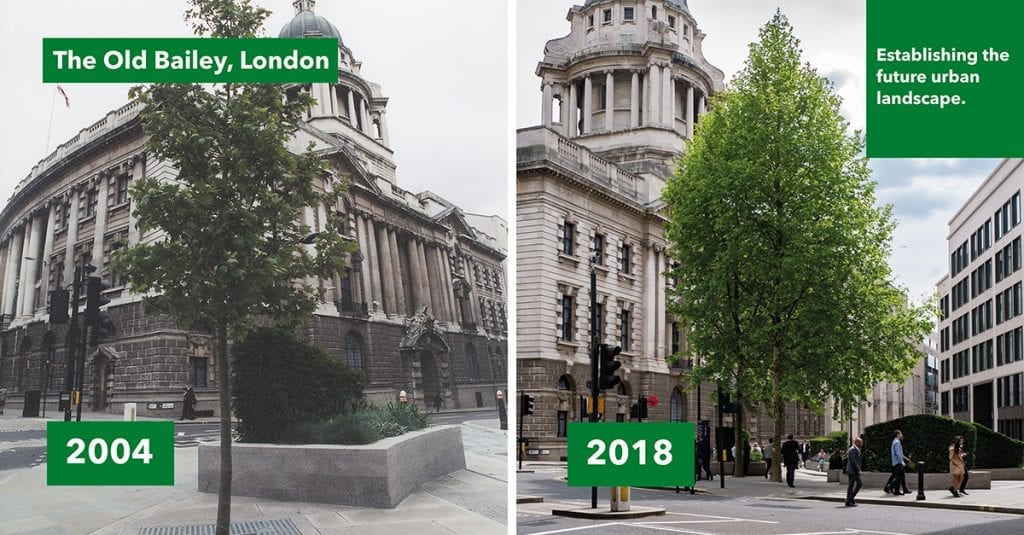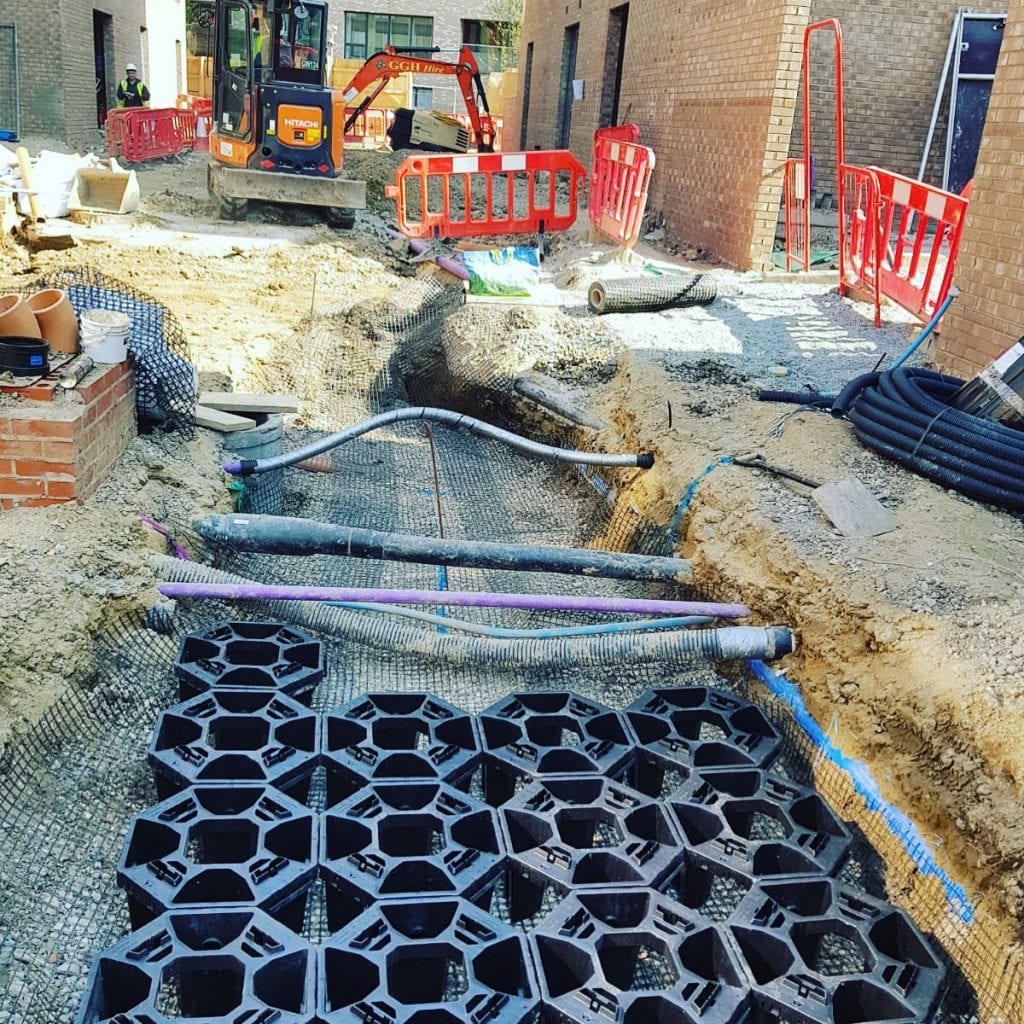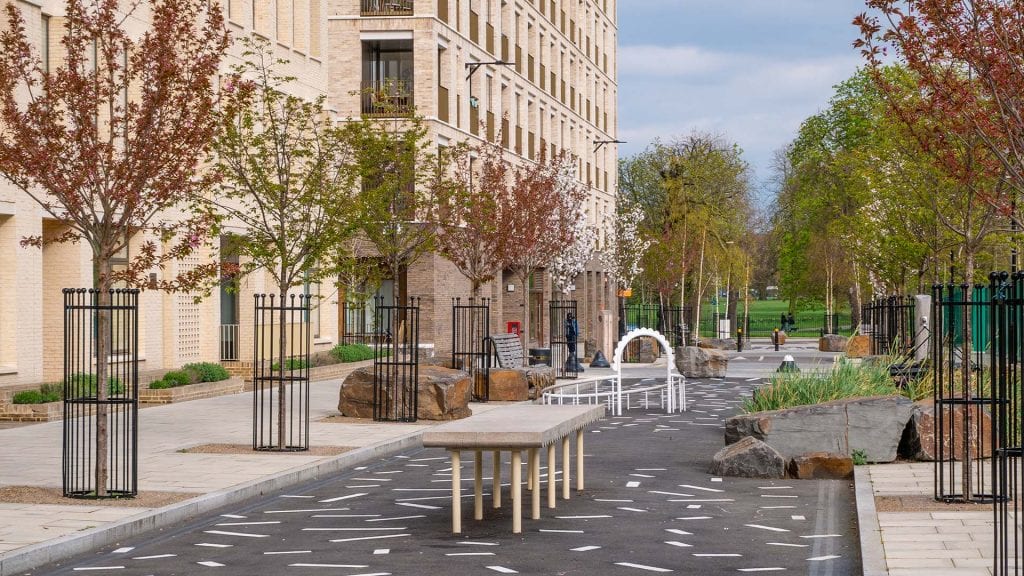Since the inception of GreenBlue Urban in 1992, we have set out to research and provide solutions to assist trees in their battle to establish in urban areas.
In the late 1990’s, we commenced testing on the world’s first soil support module. The RootCell generation 1 was the world’s first soil cell and became the primary pattern for all future soil support modules. It consisted of 30mm modules stacked up to provide a structurally sound base for pavement while allowing void space for uncompacted soil.


GreenBlue Urban invented the concept of the soil cell with the goal of improving urban tree planting success and increasing leaf canopy in urban areas. Our program examined the challenges, causes of failure, and reasons for premature mortality in urban trees, and identified the key issues in these areas. We then systematically researched possible solutions and designed the world’s first soil cell prototype above as a practical system to address the challenges faced by urban soil compaction.
Now after our 27th anniversary, a lot has changed in the company and the industry. We have developed load bearing tree pit systems, this was first using StrataCell and then RootSpace and we have now firmly moved into the stormwater management and LID/SUDS space. Therefore, we have taken a step beyond the basics of managing root systems, providing for uncompacted soil, to a multifunctional SUDs tree pit approach – the ArborFlow system.

However, it is not only GreenBlue Urban who have aspired to provide for urban trees. There are many different approaches and concepts, so how do we know what is best and where and when each solution should be applied? We feel the answer is found by focusing on one basic question: How do we define a Tree Pit?
Oftentimes we see that tree pit designs vary across landscape practices and what planners allow through on a proposed schemes also varies across the globe. This is because ‘tree pit’ and a tree pit detail is not confined to a commonly accepted definition, its safe to say the industry requires more detailed standards!
Broadly speaking the Tree Design Action Group and Landscape institute have advanced some helpful guidance including:-
Treating the tree pit as the ‘transitional zone’ between the ‘nursery soil’ (in the field or a container/air-pot) and the ‘real world’.
It is the rooting environment that needs to reduce transplant stress, and promote healthy root growth to advance tree establishment. Various degrees of design intervention may be required to achieve this, depending on the nature of the site (greenfield/brownfield), the existing soils, the topography, the hydrology and other environmental factors such as exposure to wind, sun scorch, etc.
Regardless of the level of design input, it is useful to stick to some basic principles for an aerated soil and healthy rooting environment. Keep tree pit design as simple as possible and reduce the amount of disturbance to the soil.
So what are the common tree pit designs we come across? How can we keep it as simple as possible? To name the most common:
Tree Sand
Structural Soils
Geocellular Systems
There is ample evidence to suggest that geocellular systems provide the essential infrastructure for the root systems to thrive and access the nutrition, air and water required to establish in constrained environments.

Sand and gravel-based structural soils require excessive volumes and maintenance that can often require more cost than engineered approaches. Simple doesn’t have to mean a complete lack of below ground infrastructure. Simple can mean cells.
“Tree Pit” when determined in a planning policy document should always have to detail the amount of healthy non-compacted soil in cubic feet, not just square feet (length width and depth, not just length and width). There are three S’s that will tell you if the ‘Tree Pit’ is up to standard – Size, Soil Volume, and System being used. Our latest Soil Volume guide can be viewed online here.
Now more than ever it is important to safeguard the integrity of what a ‘tree pit’ is and should be with an ever- increasing number of systems, originally designed for other uses being utilized for tree planting.
Oftentimes, this results in too heavy a compromise for the long- term success of the tree. At GreenBlue Urban, we have come to define the tree pit from 27 years of research into the needs of the tree, and only then have we added the stormwater management aspect. However, simply using cells originally intended to attenuate stormwater and then use them for trees presents another design challenge.
